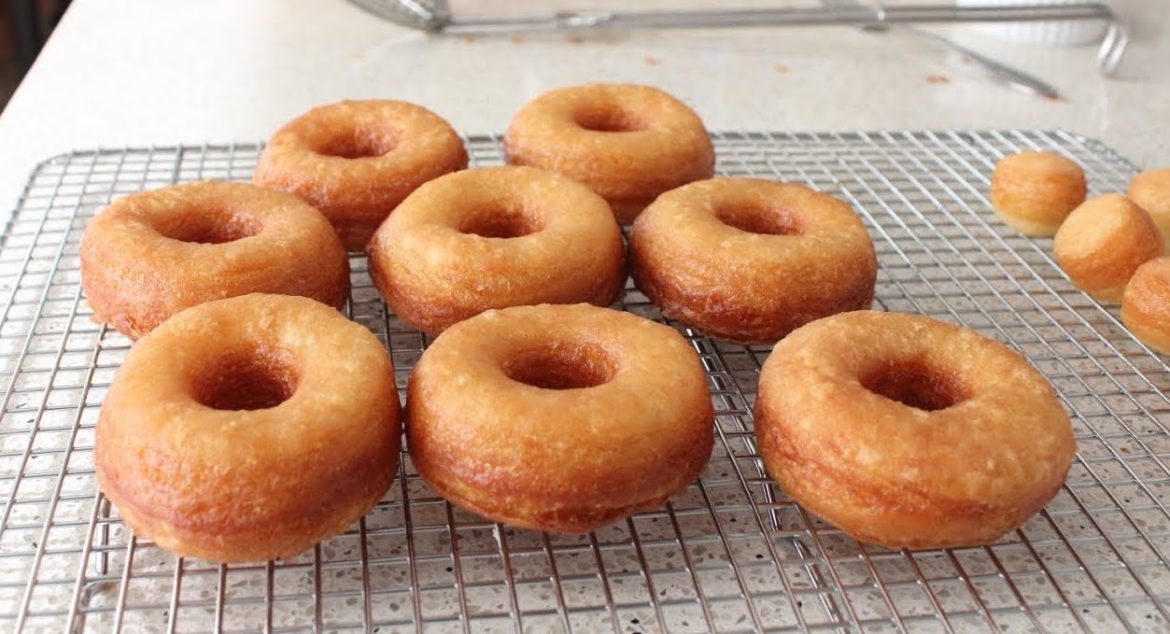I guess since you’re on a cooking blog, you’ve probably heard of “croutons“, but just in case, here’s a brief overview.
This growing hybrid/doughnut was invented by Dominique Ansel at the Dominique Ansel bakery in New York. It got a sensation overnight, and people are now queuing for hours just to have a chance to get one of the few precious products that are made every day.
Cronuts – Part 1: How to Make the Dough

Ingredients
- 1 packet of dry active yeast (2 1/4 teaspoons)
- 1/2 cup hot water (105 degrees F.)
- 1 teaspoon fine salt
- 2 tablespoons rounded white sugar (add extra if you want a sweeter "nut")
- 1/2 cup milk
- 2 tablespoons melted butter
- 1 teaspoon vanilla extract
- 1 large egg
- 1/8 teaspoon ground nutmeg
- 1 pound of all-purpose flour, more if necessary
- 6 ounces soft, unsalted, European-like butter (12 tablespoons)
Instructions
- Mix the yeast and hot water, and let stand for five minutes.
- Add the rest of the ingredients, except for the Flour and Butter in the European way, and whisk to mix.
- Add the flour and knead for about three minutes or until a ball of soft, sticky dough forms.
- Wrap the dough in plastic and refrigerate for 20 minutes.
- Roll out the dough into a rectangle of about 18 x 9 inches.
- Proceed with the butter as indicated!
Notes
These cronuts were fried in grapeseed oil, at 350 degrees F. for about 1 1/2 to 2 minutes per side
Cronuts – Part 2: Frying and Eating
As promised, here is the finale of our two-part croutons show! The series ends with the frying of the two batches – the first half of the dough was fried as in the last video, but the second received an extra triple, which gave much higher cronuts, but less crispy.
Both were very good and the second batch was more impressive, but I think for a real growing hybrid/doughnut, the solution might be to have thinner and less thick croutons.
Of course, if you’re going to fill yours with vanilla custard, as is customary in New York, then the larger and more airy wheelbarrow is probably a better delivery system. Rest assured, further exploration is inevitable.
In case you were wondering, the second half of the dough was frozen overnight and then thawed in the refrigerator until it was soft enough to work, so it seems that manufacturing and freezing are not a problem. I hope you will try it soon.
Enjoy
- Show also How to make Cronut
- Inspired by foodwishes


